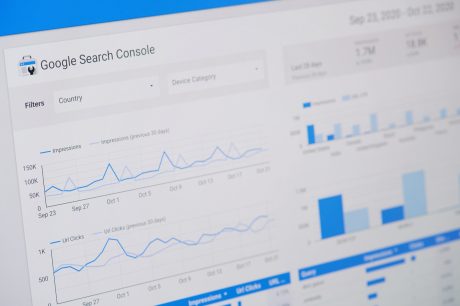How to Do a Competitor Analysis for SEO?
Basic optimization and best SEO practices may not be enough to get to the top of search results. Then the competitors analysis and further optimization of the page is needed.

Checking what SEO data your competitors are using from the top 10 and implementing the missing improvements to be simple and effective to enter the position of the optimized page.
What factors are worth paying attention to?
Below is a list of the top 10 factors to consider when analyzing your competitors.
Domain age
It has been known in the SEO industry for years that a good domain is half the battle. The domain’s authority includes the date of its first indexation in Google and the quality of links that lead to the domain.
Expert advice: If you plan to create a large portal or store, do not wait six months or more for publication until everything is fully ready. Create a “Coming soon” introductory home page with great temporary thematic content and index it immediately to start building your domain authority on Google as soon as possible. Remember that a domain usually obtains its full authority about a year after it’s got indexed. It’s a good idea to sign up for a newsletter on your temporary site to let visitors know when the site is fully online.
Number of words used
The number of words optimal for positioning in the top 10 for a given keyword varies for different industries and queries, therefore competition analysis is necessary to determine what number of words should be used on the page.
Expert advice: Longer content is usually better because it describes the topic in detail and it tends to be more often shared on social media.
Proper keyword density
Analysis of the competition from the top 10 will allow you to determine the optimal saturation and where to place the keyword.
Expert advice: Be careful not to pass the border and don’t use the main keyword too often in your article. It is also important that the keyword is placed in the appropriate tags (title, description, h1). For more information, see the article: “How to Optimize Webpage for a Specific Keyword or Phrase?“
Use of thematically related words in the page content
The length of the content alone is not enough. It is also important to use relevant thematically related words in it. What are these keywords you can check exactly in the TF IDF tool.
Number and quality of linking domains to the home page
High authority domains are characterized by a large number of linking domains. In SEO, however, quantity is not that important as quality.
Expert advice: One link from a high authority domain may be worth more than 100 average quality links. And links of suspicious quality can even be harmful. Be careful about the quality of the links pointing to your website.
Number and quality of linking domains to the subpage
It is worth to check the backlinks of your competitors and try to obtain the links from the best places that your competition has.
Expert advice: You can often find search results in which pages that are has 0 external links rank high. In these cases, usually, the site’s domain has a high authority and many quality backlinks lead to it. In another case, such a website may also have a very well-made technical optimization and its content corresponds well to the intentions of the users (also it can be a positive behavioral factor at the same time).
The type of content and the HTML tags used
If your competitors use a form, tabular data, videos, and quotes then it is worth considering placing these elements in appropriate, semantically correct HTML tags (e.g. form, table, ul, li, blockquote) on your webpage too.
Number and type of h1-h6 headers used
H1 header placement is a good SEO practice that should be implemented on every page. However, it’s also worth taking a look at the number and type of all headers your competitors are using and adapt your site’s content and structure to that as much as possible.
Number of images used (img tag)
One image for an article with the appropriate alt tag is usually good practice. However, it is worth checking how many images in the article are used by your competitors and increase the number of them on the page if necessary. Remember that it is not only about the quantity, but also about their quality and, above all, the best response to the user’s intention and the best user experience.
Usage of Schema.org
Check what structured data your competitors use and what is missing from your website. Thanks to the structured data, search engines can better understand your site and also display expanded results directly in the search engine. This, in turn, can improve the CTR (click-through rate) of the SERPs.
How to quickly perform a full competitors analysis?
Manual analysis and study of the correlation between ranking factors and page positions is a labor-intensive activity, which additionally allows you to make mistakes (human factor). Therefore, it is worth to use the Competitors Analysis tool created for this purpose. Thanks to this tool, you will quickly and easily learn all the most important factors that are worth paying attention to when analyzing the competitors (not only those presented in this article) and you will learn how your website compares to the competitors. You will get precise information on what and where to improve, e.g. how many words should be added, what words should be added to the content, what structured data to use, and many many more.
Partnering with field professionals and companies like Loopex Digital, can further streamline your competitive analysis process. Their expertise and specialized tools can provide deeper insights into your competitors’ strategies and help identify untapped opportunities for growth.
Optimization was done and what now?
After performing the optimization according to the recommendations of the Competitors Analysis tool, wait for the results. Our observations show that positive results can appear within one to several days, weeks or even months. It all depends on the current condition of the site, its authority, domain age, competition activity, indexation frequency, algorithm updates, and many other factors. You can speed up the process by submitting an optimized page for re-indexation in Google Search Console.
How the recommendations from the Competitors Analysis tool helped to improve your website? Let me know in the comment.



September 19, 2020 at 3:17 pm |
The step-by-step approach to identifying missing elements in one’s SEO strategy could be a game-changer for many.
March 25, 2023 at 7:37 pm |
The section on HTML tags and structured data is enlightening. Incorporating elements like tables, videos, and forms in semantically correct tags seems like a straightforward yet effective strategy. It makes me think about how often we overlook these details.